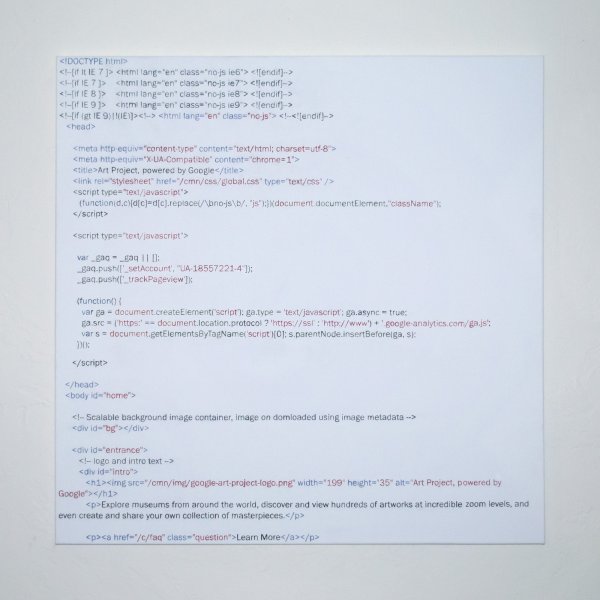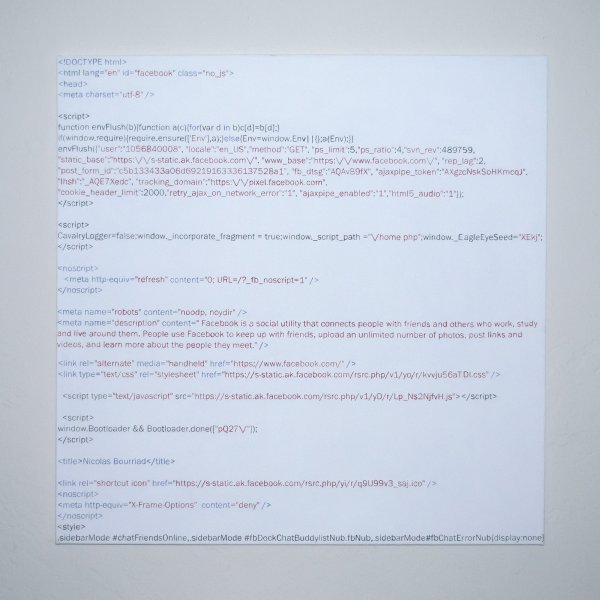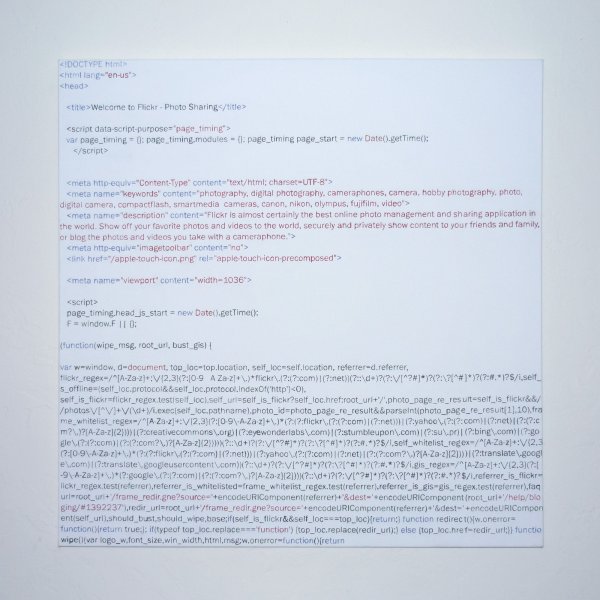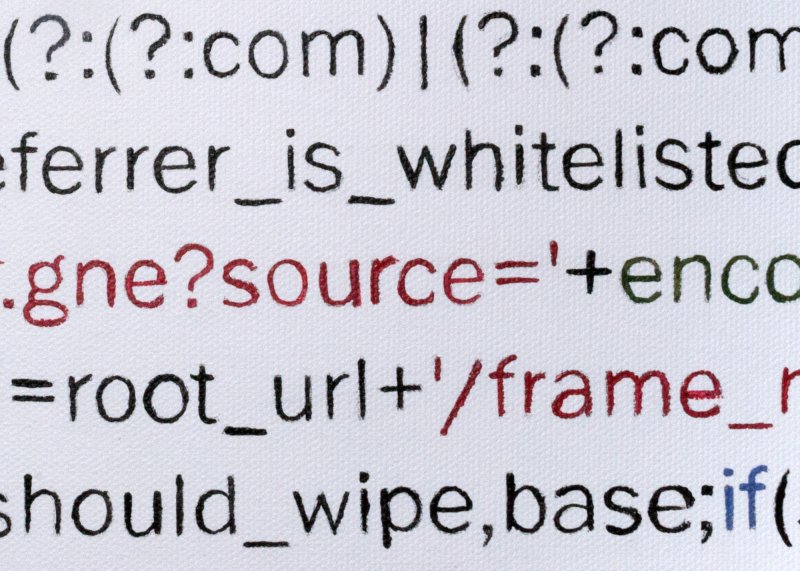Hypertext




Hypertext is an attempt to address the presence of artwork on the internet. It consists of the HTML source code of three websites — Google Art Project, Flickr, and Nicolas Bourriaud's Facebook profile. Each website attempts to display artwork on the internet in its own way. Google Art Project is the most literal translation of artworks on the web, and is a poor attempt to experience fine art objects on the web. Flickr is an attempt to propel vernacular photography into the realm of fine art through the language of the web. Finally, Bourriaud's profile on Facebook illustrates the relations of the man who coined the term Relational Aesthetics (into which a substantial amount of internet art may be classified).
The work is very minimal in nature, so each aesthetic choice needed to have a clear and concise reasoning behind it. Each aesthetic decision was meant to redirect the viewer toward the conceptual art movement from the 1960s, which emphasized the dematerialization of the fine art object in favor of ideas. For example, the dimensions of each painting are the same dimensions of Lawrence Weiner's wall removal piece, and the colors used in the text are the colors used by Sol LeWitt in many of his wall drawings. Using the language of the web in the context of the conceptualists, the viewer inevitably compares internet art to conceptualist works, creating a dialog regarding the role the internet plays in art and the role art plays on the internet.
Hypertext was exhibited in a group exhibition titled Are We Not Men in early 2012.